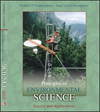 |  Principles of Environmental Science William P. Cunningham,
University of Minnesota
Mary Ann Cunningham,
Vassar College
Solid and Hazardous Waste
Learning ObjectivesAfter studying this chapter, you should be able to
I.identify the major components of the waste stream, and describe how wastes have been-and are being-disposed of in North America and around the world. |
 |  |  | II.explain the differences between dumps, sanitary landfills, and modern, secure landfills. |
 |  |  | III.summarize the benefits, problems, and potential of recycling and reusing wastes. |
 |  |  | IV.analyze some alternatives for reducing the waste we generate. |
 |  |  | V.understand what hazardous and toxic wastes are and how we dispose of them. |
 |  |  | VI.evaluate the options for hazardous-waste management. |
 |  |  | VII.outline some ways we can destroy or permanently store hazardous wastes. |
|



 2002 McGraw-Hill Higher Education
2002 McGraw-Hill Higher Education